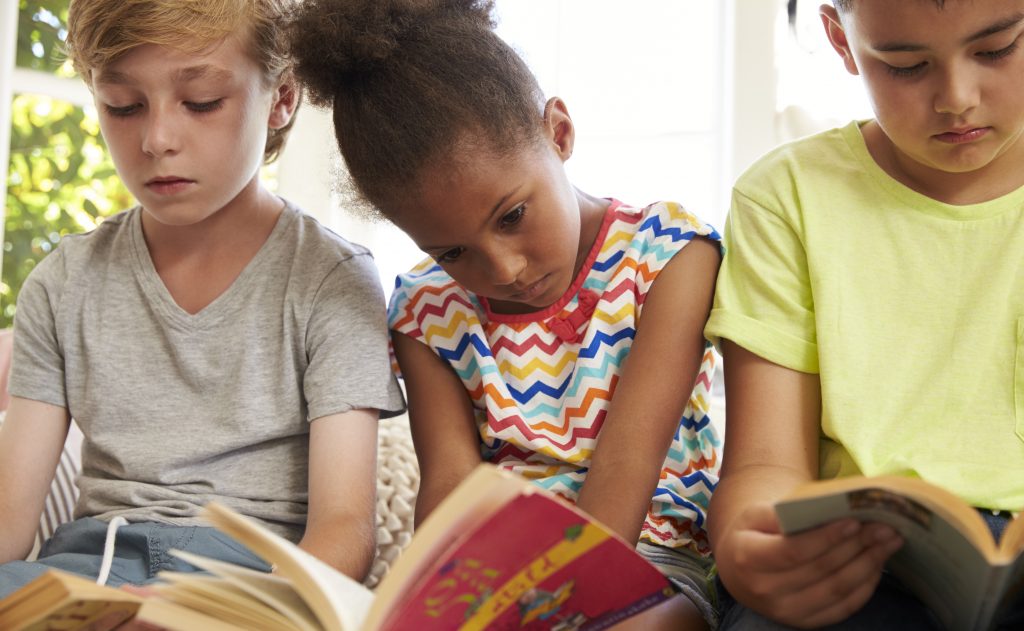Many children don’t take to reading like ducks to water. A kindergartner or first-grader sitting at his desk in a crowded classroom, or in a circle at his teacher’s feet, is just as likely to be mystified as he is to be illuminated by her earnest reading demonstrations.
There are letters that correspond to sounds that, when in certain combinations, make words some of the children know. But for other kids, like my fourth child, the mystery was nearly impenetrable.
By early second grade, the “whole language” pedagogy favored by educators had failed him, as it does so many children. I was lucky enough to know what he needed, having learned to read English as a second language in middle school. I understood that the old-fashioned phonetic approach was his only way into the complexity of the written word. He needed to learn how to “decode” the complicated English relationship between sounds and the order of letters.
I rummaged through our bookshelves for our Bob Books, short and colorfully illustrated, each one working on a consonant/vowel/consonant, and then variations, slow and orderly. Every evening, tired after a long day of work, driving, housework, and other children’s homework, I would set a 30-minute timer and slowly drill the combination of letters that produced certain sounds into his brain. By the clock, as it slowly ticked away the time, I would point to each page and say, “Try it again.” And then, “Try it again.”
Slowly the Bob Books sank their phonetic roots into his recalcitrant brain. The gray cells in his head were stubborn, though. I would sound out the letter “T” in tip, tot and top, making the hard first noise sound against my teeth. “Teh, teh, teh,” I would utter directly into his ear. “Teh, teh, teh,” I would repeat obediently.
I would make him trace the little t and the big T and touch the tip of his tongue to the roof of his mouth, just posterior to his new front teeth. The triumph of “He’s got it!” would, two minutes later, give way to crushing disappointment when the word tot again posed a complete mystery to him.
“What sound does this make?” I would beg. He would look at the word, puzzlement growing into anxiety and then desperation. He wanted to please me. He knew that somewhere in his foggy head was the answer. I couldn’t always hide the tears in my eyes when after a long session he again forgot the sound that “T” made.
Through months of persistence and heroic efforts on my son’s side, phonetics finally dawned on him. There was a system in the madness. There were words that he could learn, words that came up again and again, like “the” and “and.” There were words that he had never seen but now could decipher. Sound by sound, tripping tongue and meeting lips, ahs, ehs and ees could be strung together and make the magic of words.
Those words would make the magic of sentences. And the sentences would make the magic of stories, where boys and girls did heroic things and slew dragons, or just caught fish. By the time fourth grade came around, he was at the top of his class and reading long chapter books. The mystery of other worlds was open to him. Each book was a door to a reality far from his.
Of course, all that patient work didn’t just help launch him into the delight of literature and poetry. It helped him open every door on the way to academic achievement and professional success, a world of unlimited possibilities.
In today’s fast-paced, technologically dizzying world, it’s no secret that early literacy tracks closely with the metrics of human flourishing: College enrollment and graduation rates, income level, entrance into the middle class, and even incarceration rates are all impacted by the ability to read proficiently in third or fourth grade.
The evil news is that too many children fail to read at school level, including 52% of Black fourth-graders and 45% of Hispanic fourth-graders. These pre-COVID numbers are surely more dismal now, in the wake of lockdowns and remote learning. If the racial divide on prosperity and stability disturbs you — and it should — consider that American schools’ failure to teach our children to read is growing that divide every day.
Those children who don’t have a mother or father to step into the breach are at the mercy of “the system.” Perhaps there are patient second-grade teachers who don’t have their own children waiting for them to come home, who can spend the extra time with the boys and girls like my son — but I don’t imagine there are many.
Let’s hope that school systems across the country find their way back, somehow, to fulfilling what may be their most important mission.

